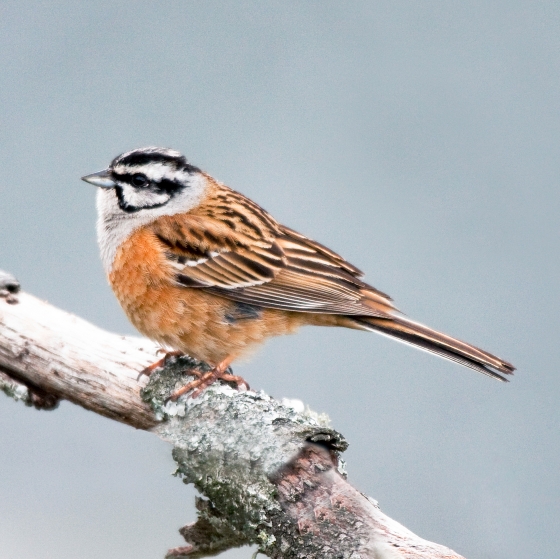Rock Bunting

Introduction
This extremely rare visitor to Britain is normally found breeding on alpine rocky slopes in southern Europe.
Most populations are resident, though more northerly ones may be migratory and all move to lower elevations during the winter months.
Added to the British List based on two individuals caught in Sussex in 1902, there have been very few records since.

Key Stats
Status and Trends
Conservation Status
Population Size
Population Change
Population trends of this scarce species are not routinely monitored.
Distribution
This vagrant is too rarely reported to map distribution.
European Distribution Map
Distribution Change
This vagrant is too rarely reported to map distribution change.
Seasonality
This species has been too rarely reported to BirdTrack during 2011–22 to properly assess seasonality.
Movement
Britain & Ireland movement
Biology
Survival and Longevity
Survival is shown as the proportion of birds surviving from one year to the next and is derived from bird ringing data. It can also be used to estimate how long birds typically live.
Classification, names and codes
Classification and Codes
- Order: Passeriformes
- Family: Emberizidae
- Scientific name: Emberiza cia
- Authority: Linnaeus, 1766
- BTO 5-letter code: ROCBU
- Euring code number: 18600
Alternate species names
- Catalan: sit negre
- Czech: strnad vinicný
- Danish: Klippeværling
- Dutch: Grijze Gors
- Estonian: mägitsiitsitaja
- Finnish: vuorisirkku
- French: Bruant fou
- German: Zippammer
- Hungarian: bajszos sármány
- Icelandic: Steintittlingur
- Italian: Zigolo muciatto
- Latvian: klinšu sterste
- Lithuanian: kalnine starta
- Norwegian: Klippespurv
- Polish: gluszek
- Portuguese: cia
- Slovak: strnádka cia
- Slovenian: skalni strnad
- Spanish: Escribano montesino
- Swedish: klippsparv
- Welsh: Bras y Graig
More Evidence
More evidence from Conservation Evidence.com
Partners
Citing BirdFacts
If you wish to cite particular content in this page (e.g. a specific value) it is best to use the original sources as linked in the page. For a more general citation of the whole page please use: BTO (20XX) BirdFacts Species: profiles of birds occurring in the United Kingdom. BTO, Thetford (www.bto.org/birdfacts, accessed on xx/xx/xxxx).

